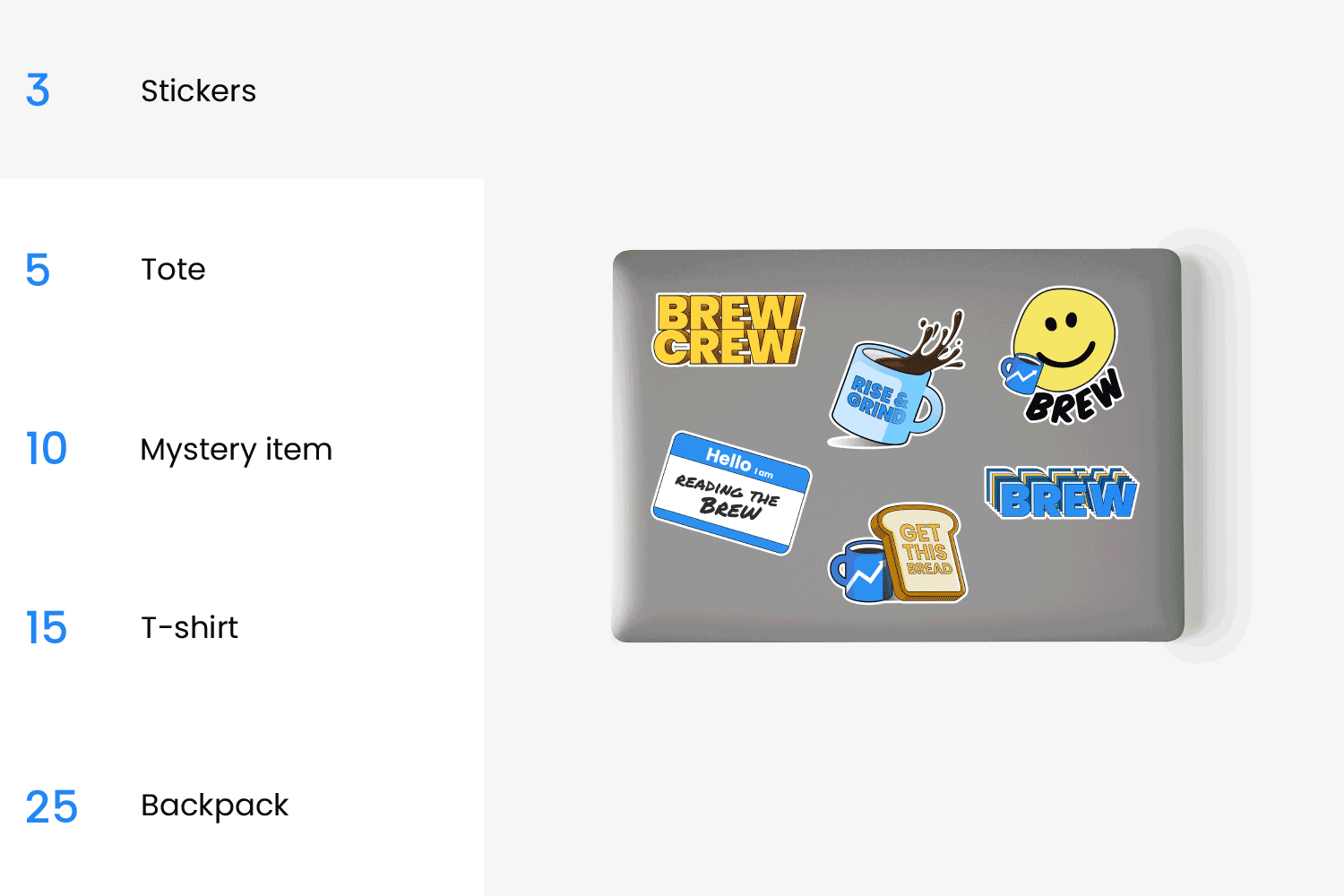|
It’s Monday. Don’t have your Halloween costume figured out yet? Well, we’ve got you covered: Target dropped a costume inspired by the viral Stanley tumbler.
In today’s edition:
—Ryan Barwick, Andrew Adam Newman
|
|
Photos: Sylvia Shubert, UCG/Getty Images
|
Novo Nordisk has a problem most advertisers would kill for.
Its prescription drug, Ozempic, has become something of a cultural shorthand for all types of weight-loss medication, specifically the new class of semaglutide GLP-1 drugs that have the potential to dramatically curb obesity in the US. The problem? Ozempic is only approved by the FDA to treat patients with Type 2 diabetes, whereas a different Novo Nordisk semaglutide drug, Wegovy, is approved to treat weight management.
“[Wegovy] came out second, so Ozempic became kind of the household name,” Sylvia Shubert, US therapeutic area head for obesity in commercial strategy and marketing, Novo Nordisk, told Marketing Brew. “We’re spending a lot of time, education, and effort to distinguish the two.”
So far, that effort has included a television advertising campaign, first released in June, that has run during shows like Good Morning America and Law & Order: Special Victims Unit, according to the measurement company iSpot. According to iSpot estimates, the pharma giant has spent over $105 million on the campaign to date.
- The campaign, which focuses on the potential benefits of taking Wegovy, like improved cardiovascular health, has reached some 5.7 billion impressions, according to iSpot, and isn’t scheduled to stop running anytime soon, Shubert said.
- Its release was timed with the more widespread availability of the drug, something Shubert still watches carefully to manage the company’s advertising campaigns.
“We are constantly monitoring [supply]; that is something that is always top of mind,” she said.
Continue reading here.—RB
|
|
|
Oh wait, you don’t have one? No sweat. If you’re in the market for a top-notch agent, you’re gonna wanna listen up.
Just go to Agent.AI to access their robust network of AI agents. Their agents can help with:
- automating tedious tasks
- gaining deep insights
- driving better results
Edging out your competition can be as simple as calling your AI agent and getting them on those monotonous tasks that you don’t want to do—like company research or, yes, even meme-making.
Agent.AI can help you analyze your competitors, extract potential company prospects, and do research based on keywords. They’ve also got waaaaay more AI agents currently in training to help take even more tasks off your plate. PS: It’s free to sign up.
Find your AI agent today.
|
|
Illustration: Anna Kim, Photo: Adobe Stock
|
US District Court Judge Leonie Brinkema has a task few outside of the advertising world would ever take on willingly: try to comprehend ad tech.
Beginning this week at a courthouse in Alexandria, Virginia, Brinkema is presiding over the advertising trial of the decade, as the Department of Justice will attempt to show that Google, the world’s biggest advertiser, has monopolized advertising technology.
The trial, which is expected to last anywhere from four to six weeks, represents the largest existential threat Google has ever faced, and could have wide-reaching effects across the advertising landscape as lawyers unpack how Google’s advertising tools have dominated the industry. It’s not the ad juggernaut’s first bout with the DOJ, which just last month succeeded in its case arguing that Google had acted illegally to maintain a monopoly in the search-engine industry.
The arguments: The crux of the DOJ’s complaint focuses on the complex (and perhaps mind-numbing) details around programmatic advertising, including the bidding and targeting systems that help determine how a digital ad is bought and sold. The DOJ alleges that Google made acquisitions that allowed it to both stave off competition and maintain its hold on the most important parts of the ad tech “stack” or supply chain.
According to the DOJ, this has allowed Google to control the digital ad ecosystem, bidding on behalf of advertisers as well as owning the auction platform itself (see this nifty chart the DOJ published when it announced the suit).
On the publisher side of things, the DOJ alleges that Google made access to Google Ads contingent on using its ad server, thus cornering the market. The DOJ will argue that, as a result of Google’s dominance, publishers made less money and ads cost more. On average, Google keeps “at least 30 cents—and sometimes far more—of each advertising dollar flowing from advertisers to website publishers through Google’s ad tech tools,” according to the complaint.
In a January blog post, Google responded to the DOJ’s argument by emphasizing that ad tech is a messy, busy, and competitive space, with plenty of worthy competition including The Trade Desk, Facebook, Amazon, TikTok, and Netflix. The company argued in a recent filing that “expanding the existing degree of interoperability between Google Ads and third-party exchanges” would be time-consuming, labor-intensive, and could risk exposing advertisers to “invalid traffic and brand-safety risks.”
Read more here.—RB
|
|
UrbanStems
|
Wirecutter loves me, Wirecutter loves me not.
So went the petal-plucking melodrama for UrbanStems, which was declared the best online flower delivery service by the New York Times product review team in 2021…only to be dethroned the next year over what Wirecutter called “dilapidated deliveries.”
Megan Darmody, VP of marketing at UrbanStems, acknowledged to Retail Brew that “we had sort of gotten ourselves in a pickle” with a bouquet that sometimes was delivered looking less impressive than on the company’s website. The problem, Darmody explained, was the bouquet photo showed Free Spirit roses, which have a striking blend of orange and red, but because some farms UrbanStems partnered with couldn’t source Free Spirits, were being substituted with—gasp!—standard pink roses.
“We really pride ourselves in ‘what you see is what you get,’ and Wirecutter was totally right: The bouquet that they got didn’t look as good as it did on-site,” Darmody said. “We vowed to never let that happen again.”
So UrbanStems regrouped.
“This wasn’t just a marketing initiative,” Darmody said. “It was like a full, company-wide goal to get this title back.”
In April, Wirecutter published this year’s rating. And guess what UrbanStems came out smelling like?
UrbanStems “nails all of the perks of a modern digital florist: an easy-to-use website, clear and accurate photos, and timely deliveries,” Wirecutter wrote in crowning the brand its top pick again.
Winning “both times was a huge accomplishment” but “the second time even more so because…it does take a lot of collaboration to really try and move the needle on quality and on value for money,” Darmody said.
Read more on Retail Brew.—AAN
|
|
|
The Marketing Brew Summit is almost here! In just a few days, we'll bring together marketing pros from top brands like CAVA, Ally Financial, NY Liberty, e.l.f. Beauty, and many more to tackle the industry's hottest topics. Get ready for actionable insights, fresh ideas, and opportunities to connect with fellow marketers. Don't miss your chance—register now before it's too late!
|
|
Morning Brew
There are a lot of bad marketing tips out there. These aren’t those.
Press Play: A look at how some retailers are approaching streaming TV ads.
Hit Send: Best practices for writing marketing emails.
Eyes on the prize: Pointers on Instagram metrics to focus on.
|
|
Francis Scialabba
|
Executive moves across the industry.
-
Puma tapped Clarks alum Tara McRae to serve as SVP of marketing and brand strategy for North America.
-
The New York Times elevated Amy Weisenbach to CMO.
-
Burberry named Jonathan Kiman, formerly of Gucci, as CMO.
|
|
ADVERTISE
//
CAREERS
//
SHOP
//
FAQ
Update your email preferences or unsubscribe
here.
View our privacy policy
here.
Copyright ©
2024
Morning Brew. All rights reserved.
22 W 19th St, 4th Floor, New York, NY 10011
|
|










